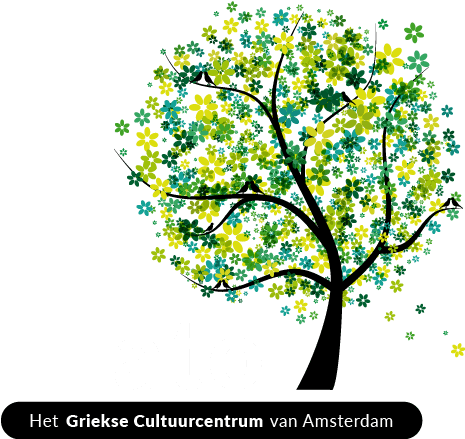No products in the basket.
Bread: more than just food!
The history of bread in the world
It belongs to our everyday life and is one of the things with the longest history. We are talking of course about bread. “Kneaded” with the history of man and identified with food, survival, worship, and enjoyment. But bread is something more than all of these: it was and remains a symbol of beneficial power.
Bread became a basic food when wheat and barley were among the first plants that were cultivated and made it possible for people to become farmers rather than hunters and gatherers.

Egypt seems to be the first stop in its long history. Wheat was gathered in the port of Alexandria and travelled from there everywhere on merchant ships. If wheat was not on time, the populations in large centres were in danger of getting hungry. That’s why the laws that regulated the travels of the merchant fleet were very strict.
The Romans took the art of bread making and developed it into small industries. In Pompeii for example, under the lava of Vesuvius, many bakeries were found.
In Europe of the Middle Ages, bread was, besides basic food, part of the cutlery. A piece of stale bread was used as an absorbent dish, which at the end of the meal could be eaten, given to the poor or fed to the dogs.
For many generations white bread was preferred by the wealthy families, while poor ate wholegrain bread. Things were reversed in the late 20th century, with wholegrain bread being preferred because of its high nutritional value. On the contrary, white bread was associated with the ignorance about nutritional foods.
Over the centuries, bread has gone through various stages and different uses. In other countries, it is a part of eating habits, while in other countries (like Greece) it is combined with the ritual of food and all the different meals.
The role of bread in Greece
The role of bread in Ancient Greece
Bread used to be the basis of the Greek diet, while the ancient Greek word άρτος (=bread) meant both: bread and food in general.
For the origins of the modern Greek word ψωμί (=bread) there are two different options. One is that it comes from the ancient verb ψώω, which means: to rub, to grind. The other is that it comes from the verb ψωμίζω (= I put small pieces of food in my mouth).
It seems that since the 5th c. B.C. already there was a bakery in Athens where one could buy bread, made mainly of barley. Wheat bread was something special. The most important reasons were its high nutritional value and the scarcity of wheat. The Egyptian flour was transferred to Greece by ships and consumed only for the preparation of festive or religious breads (=breads offered as a gift to the gods), or by the higher social classes.
Competition between bakeries about who makes the best bread seems to be something that has already started at this period.
Athenaeus mentions 72 types of bread: with cheese, oil, honey … However, breads in ancient Greece were named mainly after their raw material or the way they were kneaded; and they were characterized as:
- “zimitis” (=yeast made): made of flour, water and yeast
- “azimos” (=unleavened): made of flour and water, without leavening agent.
- “simigdalitis” (=made of semolina): made of very fine and good quality flour.
The role of bread in Greece nowadays

Nowadays, bread remains the basis of the Greek diet. It is made of cereal flour and, depending on the material, it can be wheat bread, barley bread, mixed bread or corn bread.
But depending on the baking it also gets other names, such as:
- “anevato” (=raised /containing leavening materials),
- “lagana” (= unleavened Greek traditional bread, typically flat, oval-shaped, with surface decorated by fingertips and sesame)
- “tiganopsomo” (=fried pita-style bread),
- paximadi (=rusks) … etc.
Regardless of its name, bread still has a special place in Greek culture and participates in every special occasion: happiness, sadness, celebrations or mourning.
In the past, the measure of the wealth of a family was often judged by the ability of ensuring the daily bread. This belief was so strong that it passed very soon in the language, with expressions like:
- “earns his bread” (=earns money to live),
- “the bread to come out” (to be able to cover the daily needs)
- “they ate bread and salt together” (they experienced together difficult situations)
- “ sb, sth ate his breads” (for somebody/ thing that is at the end of his/ its life).
- And for difficult periods of starvation or war, very characteristic remains the phrase: “they called bread little bread“
Bread was and remains in the conscience of the Greeks one of the basic ingredients of life. That’s why, when they do not “knead” it, they give it alternative forms … The best known is … a pie which combines everything that exists in the kitchen (depending on the season) with flour and water which become pastry puffs.
Rusks were also an emergency solution and covered the needs of seafarers and craftsmen as they could be kept for months.
Respect for bread may have begun in another era when goods were fewer and survival more difficult. However, it has become a way of life and thinking, and until today it seems to be exactly this way of thinking which asks us to place the bread on the table before anything else as a “welcome” or hospitality indication. Not only in the restaurants but also on our own table.
Breads for special occasions
Festive Breads

When circumstances call for it, people get dressed with their best clothes, which means that it is a special occasion. Then, it is a rule that the bread on the table “wears” also its best outfit and is becomes festive.
One of the most typical examples is Christopomo (=Christmas Bread) and Lampropsomo or Lamprokouloura (= Easterbread).
These festive breads are always made with the finest flour and are decorated with dough decorations and symbols. The decoration of festive bread has to do with the housewife’s skills and imagination, but above all with everything that is in the centre of family’s life. Easter bread is always decorated with a red egg, symbol of rebirth (which breaks and the new life comes out from within).
One of the most famous festive breads is also tsoureki . With the aroma of mastic and the sweetness of sugar it was one of the most official Easter breads. Also it was made for very special other occasions. Today is to be found all year round but without the red egg.
On Anafi island is made a special bread “Zaforisto “, special for the first day of the new year. This bread is made with saffron and when it is baked in traditional wood ovens it takes an intense yellow colour and has the particular flavour of crocus.
Another special moment in the life of a person is marriage. Bread in this case takes the name Provenda! It is a bread made with much patience and effort by experienced and skilful women. They take care to decorate it with elaborate decorations, such as flowers, but also symbols for good life and fertility.
Religious breads

Religious breads belong to another very large and separate group of breads. Since ancient years, the preparation of such breads was a part of the Greek religion. These were offered as a gift to their gods at very specific and big celebrations. They were made of wheat instead of barley flour and had their own characteristics.
Nowadays, the breads which are part of a church ceremony, carry a special stamp in the centre and are called “prosfora” (Gr: πρόσφορα/ =offers, from the verb προσφέρω / to offer). They are made in order to honour a Saint on his name day, or on other special days.
“Artos” is flavoured with mastic and sugar and is offered in very special occasions. It symbolizes the multiplication of the material or spiritual goods and also the blessing of the house.
To those who participate in a memorial or similar ceremony small buns are offered. They are shared “in memory of a soul” and are called “psichoudia” (little soul breads).
Fanouropita and Vassilopita are both festive cakes made on the name day of Saint Fanourios or Saint Vasilios (=Basil). Saint Fanourios has passed in the consciousness of the people as the saint who has the power to help them find things lost or things they desire. St. Basil’s name day is celebrated on the first day of the year; that is why it is indentified with the new year and all the hopes it brings.
Apart from all that there are numerous local customs combined with dough creations. And they are always combined with a feast, a wish, etc. One of the most characteristic traditions is the man-shape little breads made in Sfakia, Crete, on St. Anthony’s name day. He is considered as the patron saint of the place. These little breads are brought to the church with the wish and prayer that all the loved ones have a good health and overcome pain and difficulties.
Popular beliefs for bread
The semantics of bread does not stop here. There are also numerous folk customs that pass from generation to generation and they accompany people from the moment of their birth until their death.
In the past, parents urged their children to eat the last piece of their bread because there “their strength” was hidden.
Also, when a woman gave birth, they used to put under her pillow and the pillow of the newborn a small piece of bread, because they believed it would chase away all the demonic and jealous spirits.
In the pocket of a groom they also used to put a small piece of bread because they considered it a strong talisman.
Most of them are forgotten.
Bread, however, continues its way in time remaining a source of life and a powerful symbol.
© Lato,
Het Griekse Taal– & CultuurCentrum van Amsterdam




